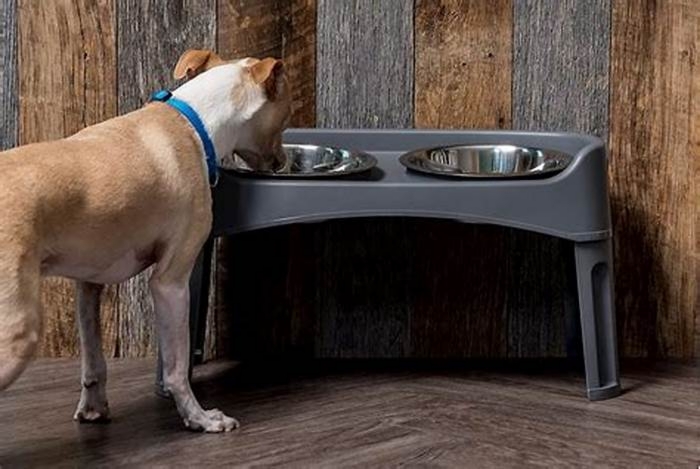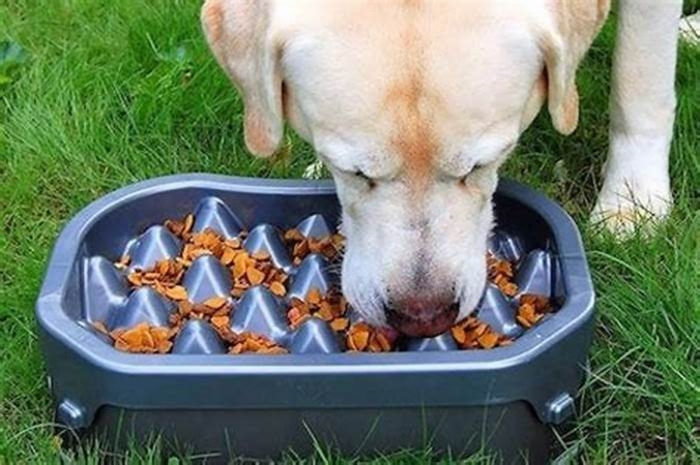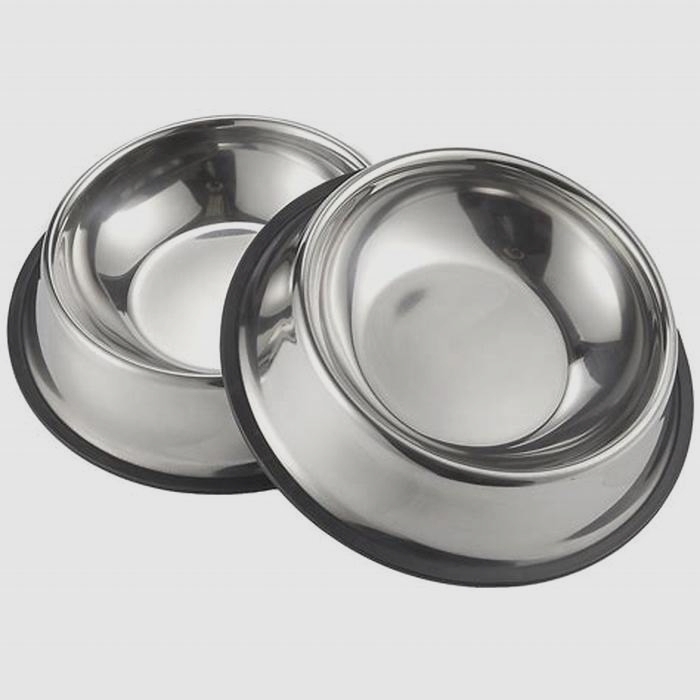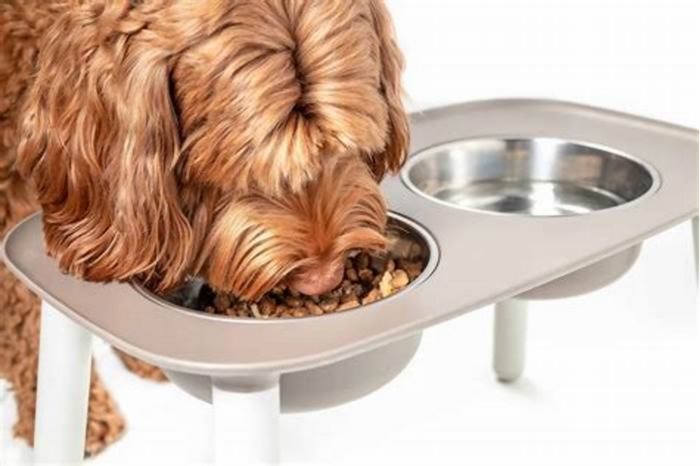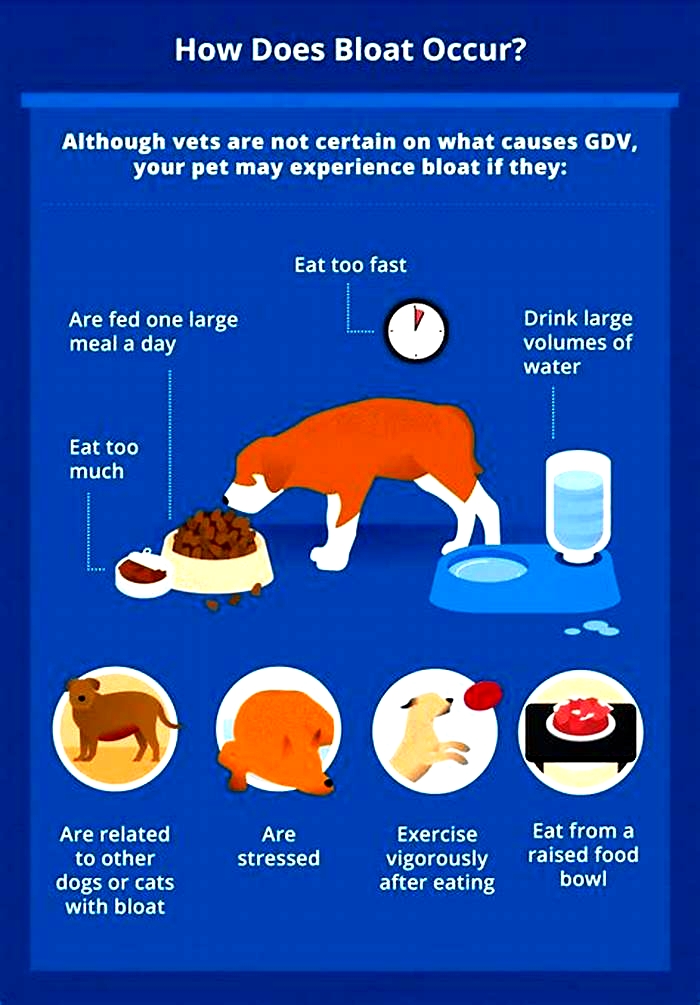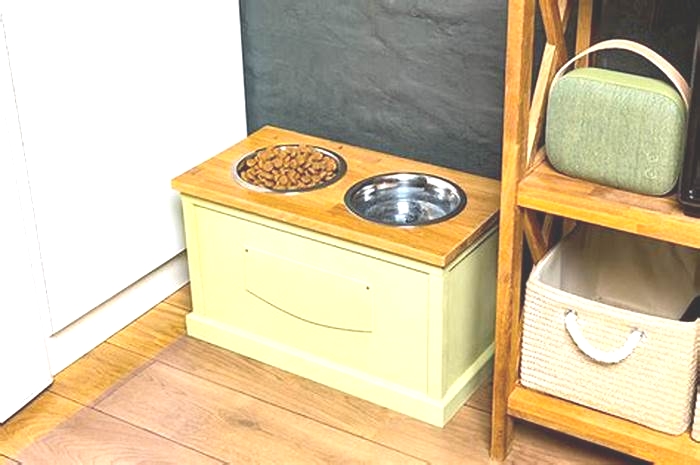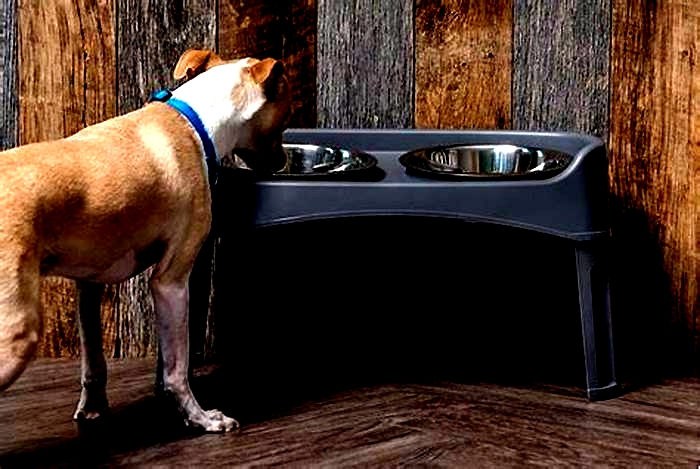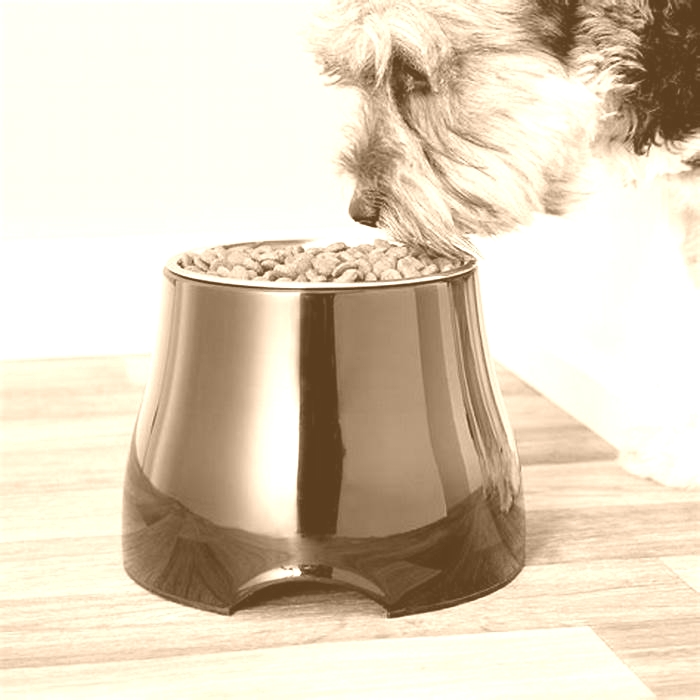Do vets recommend raised dog bowls
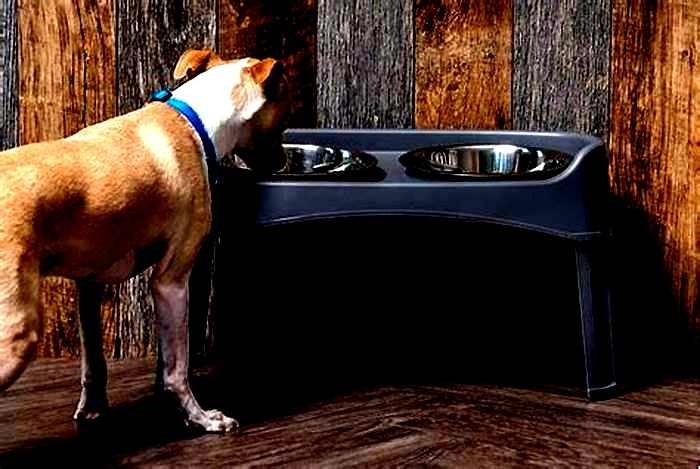
Raised Dog Bowls - All you need to know
A raised dog bowl is a great idea for most dogs, even small dogs, but are particularly beneficial to medium and larger dogs. Why? Straining down to reach your food is no fun for anyone and it can also have digestive and physical implications in the form of neck and even back strain.
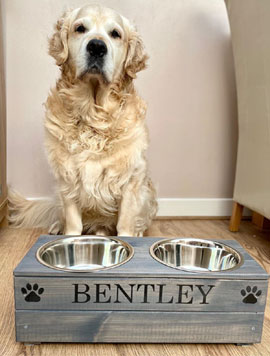
A dog bowl raised just slightly off the ground will help your dog reach their food and water without having to strain or perform their eating and drinking at an uncomfortable angle.
Having said that, going too high can cause issues too. A bowl or feeder that is too high for your dog can cause just as much strain, in the other direction, and could also exacerbate issues like bloat. So the key is to get it just right. We will talk more about raised bowl height and also bloat later plus how to measure your dog for a raised dog feeder.
Does my dog need a raised food bowl?
Are raised bowls better for dogs? Look at your dog as they eat their next meal and consider their posture. Are they having to reach down? If your dog is reaching down to their food or water, a raised bowl will be more comfortable for them. This is true for all dogs but especially for dogs who are old or who have mobility issues, pain, arthritis and so on.
An elevated dog bowl can help ease the strain on your dog's shoulders, neck and back by providing a more comfortable eating and drinking position.
Benefits of a raised dog bowl
We have already discussed the benefits for your dog's posture but you will also find that an elevated feeder or bowl will be more likely to stay in place as your dog eats (no more travelling food bowls) and will be less likely to get kicked around and spilt everywhere. Less mess is always a bonus. And if you have a pup who loves to play with their food and water bowl, dog raised bowls could certainly help.
From wooden to ceramic bowls or travel feeders in durable plastics, there is sure to be one to suit your needs.
How high should a raised dog feeder be?
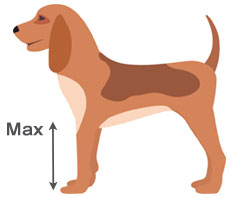
An elevated feeder or dog bowl stand should be just the right height for your dog to eat or drink with their head looking down and their neck also in a downwards position. The dog should be able to stand relatively straight but still with some stooping to reach their head and neck down into the bowl, rather than being too upright.
The best height is quite precise to your dog so I don't recommend following any general rules of thumb when it comes to feeder heights. Having a measure so a raised bowl is perfect for your dog is always best, unless you are going quite low and can be sure their head and neck won't be raised. If in doubt, go low.
To decide on the perfect elevated dog bowl height for your dog, hold a bowl up while they are eating in a comfortable position. See where that comes to and choose the feeder height accordingly. Don't forget to also take the bowl depth into account.
As a general rule, measure your dog from the floor to where their legs meet their body and don't get a raised bowl or feeder that is taller than that. That is the maximum height it should be.
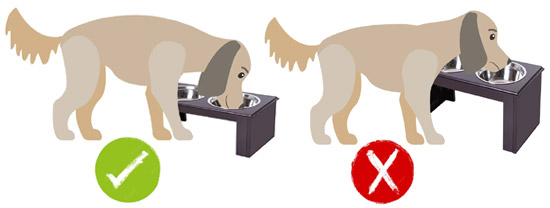
Best raised dog bowls
There are so many to choose from, so shop around for one in your style and budget. If you go for a bowl stand then make sure it doesn't wobble about as your dog eats. That is going to be very off putting for your pooch. Generally a sturdy four-legged square structure is less wobbly than ones on poles or single stands.
A feeder or stand with removable stainless steel bowls or even ceramic ones is a great idea as this will make them easy to clean.
Some dog bowl stands are adjustable which is great for getting the height just right. There are also some feeders that can be wall mounted but be sure doggie is fully grown first or you will have a wall peppered with drill holes, lol.
The most important thing is to firstly decide on the height you need it to be and then check out the heights of the ones you like.View all our Raised Dog Bowls.
Benefits of elevated water bowls
What are the benefits of a raised dog water bowl? Not having to reach so far down to the ground will help with drinking. Swallowing is much easier when your dog is not fighting gravity. Single raised dog bowls are great for meal times butif you are going for elevated drinking too, consider a double dog bowlthat can be used for food and water. Many raised feeders come in single or double options and some even come with triple bowls for larger broods. But the same rules apply to raised water bowls. Lower is better. Don't go too high.
Raised dog bowls for large breeds
If you have a large or deep chested breed, bloat is a potential issue. If you want to find out more visit Dog Bloat and Gastric Torsion.
Traditionally, raised feeders had been suggested to help prevent bloat. More recently there have been suggestions that this could actually make things worse. The general consensus of opinion is somewhere in-between. A raised feeder can be great for improved posture and comfort but don't bank on it stopping your dog from getting bloat. Bloat is a complicated issue with many factors.
Again, our advice would be to go a little bit higher off the ground but keep it low enough that your dog is still looking down with their head and neck and some of the upper part of their body. It is better to err on the side of caution. Definitely don't go too high with a dog whose size, breed or history puts them at risk of bloat. A small rise off the ground is best.
This informative article How an Elevated Dog Feeder Could Lead to Bloat by Vetinfo says "More research needs to be done on GDV [bloat] in relation to using elevated feeders. It is uncertain whether anything we do such as changing the amount of exercise, using elevated feeders, or speed of eating will decrease or increase the rate of bloat."
The issue of raised feeding bowls is still one of contention. Research and theories are ongoing regarding whether raised dog bowls and feeders really help bloat or may actually aggravate the condition.
Do vets recommend elevated dog bowls?
So what do vets say about elevated dog bowls? In 2015 we asked vet Alison Logan what her view is on the issue of dog bloat and raised feeders:
"Bloat is one of many conditions where advice varies with time, reflecting the results of ongoing research. Yes, raising the feeding bowl was advised at one time and current thinking is that it is best to feed from the ground once more. That advice may well change in the future, if it has not already. It may be a matter of by how much the feeding bowl is raised, so perhaps feeding off the lowest back-door step rather than raising it by twelve inches, for example? There are so many factors potentially at play in the development of bloat that the height of the feeding bowl may be insignificant or a relatively minor feature in comparison with another factor, which may not have even been identified yet."
Hopefully this has helped but as always, any questions just ask.
By Jenny Prevel
D for Dog www.dfordog.co.ukThis article belongs strictly to D for Dog and we do not authorise the copying of all or any part of it.
The Ups & Downs of Great Dane Raised Dog Bowls
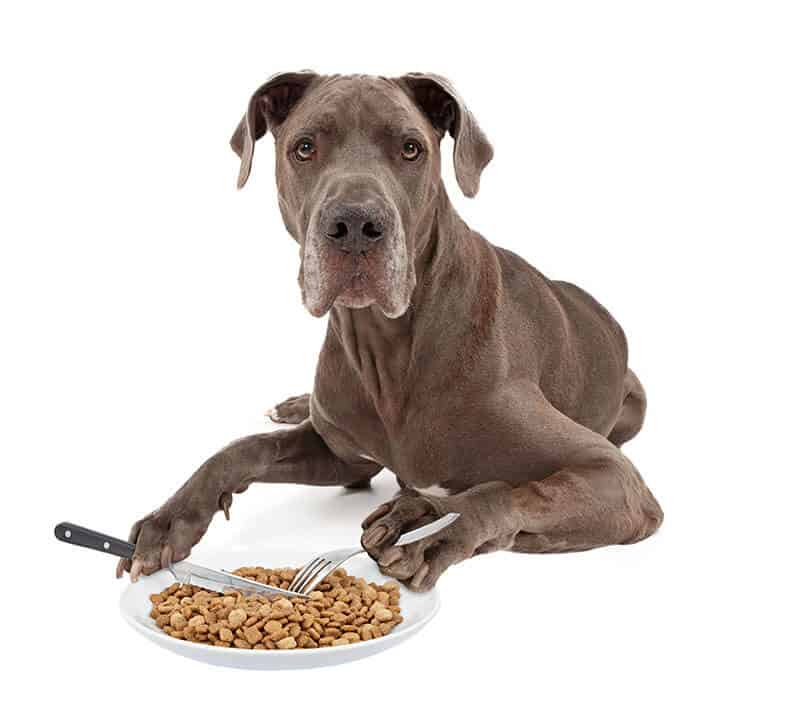
Owning a dog, let alone a Great Dane, can sometimes seem like a daunting task. Since you always want the best for them, there are sure to be many questions swirling around your head as you care for your new best friend. Do they need a kennel? How much exercise do they require? What are the healthiest foods for them? How should I feed them?
Traditionally, most dogs eat their kibble from bowls on the ground. Some may even argue that this is the best and most natural feeding position for dogs since they have evolved to eat this way.
On the other hand, other dog owners suggest there are several benefits to using an elevated feeder, especially when it comes to giant breeds or older dogs.
With so many conflicting statements, itseasy to get confused! When it comes to your pet, its always best to do yourown research and make an educated decision that is best for them.
If youre having trouble deciding which isbest, read on as we break it down a bit more.
The Elevated Feeder Controversy The Glickman Study
Raised dog food bowls have been around for a long time and many dog breeders and owners seem to prefer them when it comes to feeding their hounds. But in 2004, Purdue University published findings of the Glickman study that sent many dog owners into a frenzy.
Contrary to previous beliefs, the study concluded that feeding dogs from elevated feeders, combined with other factors such as chest size and diets with high fat or citric acids, increased their risk for developing bloat.
Considering that bloat is a painful and potentially deadly condition for pups, people had every right to be concerned. This is especially true for Great Danes, where bloat is the number one fatal condition.
Bloat occurs when the entryways into a dogs stomach become closed off because it has flipped or twisted over. This can be an effect of either gas, intestinal blockages, or stress.
To make matters worse, it can cause gagging, decrease blood flow, and prevent your dog from going to the bathroom or pass gas, sending them into shock, or even death if not treated immediately.
Alarming stuff, right?
If you look closer at the study Dr. Glickmandid, youll notice he reached this conclusion solely through statisticalevidence and anecdotal findings.
The study consisted of surveying a sample of people who owned breeds who were more susceptible to bloat and also used raised dog bowls. There were no control groups, experiments conducted, or scientific method used. This was purely a statistical review of data, in which no actual research was conducted.
Many regard the study as inconclusive given the sample that was studied. In other words you can expect a correlation between elevated feeders and bloat since the majority surveyed were already using those feeders.
Of course, there are still those who have confidence in the study and opt to feed their pets from ground bowls. Breeders and owners of larger breeds like Great Danes tend to still stick to using elevated feeders since it has been believed to help reduce the risk of bloat.
Ultimately, it is up to you and what you feel is best for your lovable beast! Below, we will cover the case for both the benefits and potential risks of using elevated bowls for your Great Dane.
The Benefits
The first and most obvious reason for feeding your Dane with an elevated feeder is comfort.
Great Danes are most recognizable for their sizeimagine having to stretch that long neck all the way down to the floor just to eat! Raised dog food bowls make it loads easier for them at feeding time since the food is at face level. This also helps reduce joint strain and correct posture.
Raised dog food bowls also come in handy for easing digestion. As you may already know, Great Danes are prone to a variety of digestive issues. Theres a lot that goes through there, okay!
Eating from a raised feeder not only makes it easier on their bodys structure but when the head is kept above the stomach, food is able to travel more efficiently down the tract.
Another advantage of using an elevated feeder is keeping Scoobys feeding and water station orderly. Great Danes are everything but dainty! It doesnt take long for feeding time to turn into a hot mess!
Dont put it past these big eaters to dig around in their bowls or play with their food and push it halfway across the room! Although raised food bowls may not totally elevate the problem, they should help make feeding a Great Dane a bit more organized.
Even though raised bowls may not work for every breed, its obvious to a Great Dane owner that their dog is more comfortable with their dishes elevated so that they dont have to strain to eat.
The Risks
You may think that youre doing your dog afavor by raising his food bowls to his height but making food more easilyaccessible through elevated feeders can have its drawbacks.
Keep an eye on your Dane as he eats and try to notice if their mealtime behavior has changed. Raising food bowls may start to encourage them to eat and drink more quickly than they should. Eating quickly can fill their bellies with air and increase the possibility of twisting.
If you see that your pup is inhaling their food or slurping down water too fast, you can slow him down by placing large, inedible objects in their food bowl.
They will have to eat around the object and will make the process of eating a longer one. Slow feed bowls are also a good option for slowing down their ravenous eating.
Ice cubes in the water bowl also help with slowing down water consumption. That way Duke can stay hydrated and keep bloat at bay at the same time!
What about older dogs?
If youre still a bit weary on whether you should get a raised dog bowl for your Great Dane, consider their age. Older dogs may start developing canine arthritis, joint pain, or mobility issues that can make eating a painful process.
The next time you feed your dog, feed from where you normally would but pay attention to how they move their body when they eat.
- Do they look like theyre in pain trying to get to the bowl?
- Do they lift the food out of the bowl and eat sitting down?
If it seems like they would be more comfortable without bending down to the floor and straining their joints, it may be time to introduce an elevated feeder!
As Great Danes age, they become at risk for Megaesophagus, or a neurological disease that involves the breakdown of the esophageal muscles.
When a dog gets this disease, they are no longer able to swallow their food and push it down into their bellies for digestion. Raised dog food bowls could be a good solution to help your dog alleviate their struggles associated with Megaesophagus.
What is the correct bowl height?
Once youve determined that you want to feed your dog from an elevated feeder, you may be wondering what the correct height should be.
You can establish the most suitable height simply by measuring your standing dog from the floor beneath their front paws up to the tops of their shoulders, then subtract approximately 6 inches.
The bowl should be lined up directly with their lower chest.
A typical giant breed dog like a Great Dane should have a bowl at a height ranging from 21 to 27 inches.
Another test is to see if your Dane is able to eat without stretching their necks upwards or having to lower or strain downwards. If their food seems to be in a comfortable position and they look happy, youve reached the perfect height!
If youre interested in an elevated feeder, you can take a look at the shortlist that we put together here.
If elevated feeders dont necessarily cause bloat, what can?
If bloat is the primary reason you are against raised dog food bowls, dont fret. Although there is the chance they may increase the possibility of bloat, its certainly not the leading potential cause for it.
Stress can be a huge factor that contributes to bloat in dogs. This can come from a variety of places a new home, nervousness, lack of exercise, poor nutrition, hormonal issues, being over-vaccinatedyou name it!
It is important that you maintain a positive and peaceful environment for your dog to eat and be sure to pay attention to any clues they may give you that they are uncomfortable.
Avoid having people or other animals walking around during feeding time, especially young children.
Although it may be easy to manage stress for the easy going and tranquil Great Dane, they are inclined to have various health issues, more notable spine issues.
Studies show that dogs with symptoms of congestion, inflammation and sensitive of the lumbar spine are more prone to having stomach problems. Be sure to keep up with exams and observe how they act when eating.
Some common therapies for spine problems are acupuncture, massage, or physiotherapy.
Eating the wrong foods can also be causing your Dane tohave stomach problems that can soon lead to bloat. Make sure their diet is fullof proteins and high-quality fats. These can play an enormous role inpreventing bloat along with other diseases.
If your dog isshowing any concerning symptoms or you suspect they may be at risk fordeveloping bloat, talk to your veterinarian about your dog and its eatinghabits.
Conclusion
The jury isstill out on whether raised dog food bowls are either harmful or helpful.
Since every dog is different across each breed, the best decision is to do what is appropriate for your dog. Pay attention to its needs, any new or existing symptoms, or any strange behavior before or after eating in order to get an idea of what will work the most efficiently for them.
With a little bit of studying and examining your Great Danes health, youll be able to make feeding time enjoyable for both you and your great big ball of joy!

